Introduction
Once again, Distilled did a great job organizing yet another LinkLove conference taking place quite traditionally in the Congress Centre on Great Russels Street in the lovely Bloomsbury area in Central London. Foliovision was there on March 30 to pick up some fresh insight and tips from this year’s LinkLove speakers.
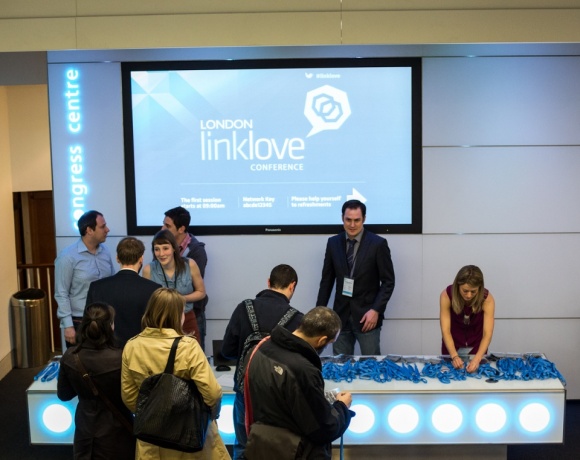
01 handing out lanyards
Duncan Morris, CEO at Distilled kicked the sold-out conference off with traditional networking with your neighbours.
As a Distilled and SEOmoz subscriber, I guessed pretty much accurately what will be the most important takes from this conference looking at the main topics featured:
- Content building vs. link building
- Getting links from high-quality authoritative sites
- Making outreach of your e-mail marketing efforts effective
- Competitor research
- Building relationships in the blogosphere
- Smart and effective old-style link building
- New trends in SEO strategy

linklove sold out intro duncan morris

full house linklove sold out
Pretty much everything that we do for our clients in Foliovision was covered so I was extremely curious about the presentations and the speakers. This was my first SEO conference, so I was really looking forward to seeking these people live, as I have been following their blogs and twitter accounts for quite some time.
Quicklinks to Presentations:
- Content Strategy vs. Link Building – Rand Fishkin
- Making Outreach Effective – Michael King
- Which Links are Really Helping Your Competitors to Rank – Branko Rihtman
- Getting Golden Links – Jane Copland
- Building Target, Relationships and Links – Wil Reynolds
- Building Links With Products and Developers – Tom Anthony
- Easy Ways to Win – Do it Differently – Martin MacDonald
- The Critchlow Hierarchy of Needs – Will Critchlow

Exciting lineup of linklove speakers
All of the speakers seem to have lots of relevant experience but not all of them held great presentations. Veterans like Rand, Martin and Will gave the impression that they know exactly what they’re talking about whereas some of the other presentations were either vague or the speaker was working harder on entertaining the audience than delivering useful insight.
Content Strategy vs. Link Building – Rand Fishkin (CEO & Co-Founder at SEOmoz)

SEO leader Rand Fishkin warns us about article networks
I expected Rand to be all white hat and moralist, but I certainly didn’t expect him to start his presentation with a “F#$&! Link Building” Slide. Definitely caught attention of those who had less coffee that me in the morning and needed a wake up call. Basically, the message was that a pure link-building approach isn’t the right way, in Rand’s words:
“I’m going to do some dumb (link building) and I’m going to hope it sticks – That’s a dumb approach.”
Link Building is Painful
- The traditional way is painful, you have to be contacting webmasters directly in a personalized way
- That’s why private link networks popped up and have been so popular ever since – a whole network of links for $49? Great!
- Not actually a good idea – if you go overboard you might get burned – it works in the short term or just partially
Why Links are in Danger
- The intent of an link was never to rank for it’s anchor text – the algorithm was originally never designed to do that
- Google didn’t meant for SEOs to rank
- Since How Google Makes Liars Out of the Good Guys – Google’s got angry and a lot of sites (700,000) mainly in the US received penalty emails from Google
- Don’t use blog/article/link networks!
- Build My Rank and other networks shut down – a stupid idea to look for a substitute in terms of other link networks
- Linkerati (targets of linkbait) are a far bigger group – networked creators are everywhere
Go Social
- Social networking sites now dominate link sharing – 66% of internet users use them
- As a result, social signals in Google are on a rise – individual link metrics have lower correlation with SERPs over time
- Google says they don’t get social signals directly – depends on what “directly” means here
- Google does collect a massive amount of social media data about every user – from Quora, Facebook, Twitter, Flick, digg, etc. – check it in your Google account
- They get a representative sample of “indirect” data to set up their social graph
Tactical Approach vs. Strategic Approach
- Tactical option A – ranking here will make things better – build content, build communities, promote great content
- Tactical option B – link building like crazy
- Strategic Approach – Acquiring customers at lower costs is winning
- Paid search is very expensive, average cost for a conversion – $95
- Organic SEO – a lot cheaper, same impact for $15
- Customer Acquisition Cost Ratio – what you get for what you invest is a lot better for organic SEO
- Rand boasting with SEOmoz doing great in terms of conversion
5 Reasons to Invest into Content vs. Link Building
- Simultaneous wins in multiple channels at once (social, link bait, etc.) – build up a follower base – brand visibility
– hopefully google will notice and feature your G+ page in SERPs - The future is stronger social following – invest in things for the long term
- Rand’s “Give me 400 linking root domains button” => the publish button in SEOmoz’s backend, of course
- Duckduckgo.com could go big example – niche market search engine, but Google started exactly like this
- Rand about building brand, brand, brand – makes everything easier

Rand Fishkin topsy
What content should I make?
– use keyword research to see what audience likes
– Fiskars example: Scissor producer having a creative blog concept – visitors creating content
– or reverse and build content, tools for your current visitors
– or come up with a brilliant idea – Shitter (immediate success)
10 PRO Tips to do Content Marketing Right
- DollarShaveClub.com – video (4 million views) that raised 1.5 million dollar funding
– but no link building, bad title tag, the site was down in a critical moment
– just a little bit of SEO and it would be beautiful - Visualize the time when a link is shared by time zone
- FeeFighters Blog – immediate success
- Economist – charts and infographics that get scraped or linked to
- Zemanta’s Blog Links Tools – images and content put in front of bloggers – a white hat link network, highly recommended
- Twitter Stories – content curation + unique design
- Slate’s Partnership with Quora
- Koozai’s viral blog posts via Google News
- See Jane Work: Demographically Targeted Office Supplies – use political and social messages to get people involved
– target search suggestions – type “Romanians are” into Google - PrideBait – find interesting people, interview them, write about them, let their publicity rank for you

16 another question
Analysis by Foliovision
Rand started the day with a clear message to all black and grey hat SEOs that their days are done. Well in our view, some balanced link building isn’t going to lose its importance that soon. Rand had a resourceful presentation that would deserve a lot more structured approach. Coming from a business college, I wonder where did all that structure from actually all the presentations go. In Foliovision, we believe great content and reasonable amounts of link building do make sense when done together to supplement each other. But yes, content is key.
Making Outreach Effective – Michael King (Director of Inbound Marketing – iACQUIRE)

Mike King acquire black hat
Last time Mike spoke at LinkLove he even rapped, this time he tried to entertain us solely with his presentation. Mike rushed through the slides so quickly I had the impression he didn’t want us to see at least a half of them.
The main point of Mike’s presentation were outcomes of a marketing research they did in iAcquire to measure certain factors in outreach efficiency. They find out that:
- gender: female got a higher response rate, men got more conversions
- salutation: personalization is key. Other that the obvious, “Hey” had the best conversion rate, but the sample was too small (unsurprisingly). “Hi” did the best among the relevant. Use Rapportive to find names.
- day of the week: Tuesday seems to work best, but weekends tend to get high open rates as people receive less mail, so they’re more likely to open it
- time of the day – 9AM had best response rate – but it makes sense to send at night, so people get them in the morning
- length of the emails – emails longer than 1000 characters tend to rank better
- logo vs no logo – emails with a logo are better
Other discoveries and suggestions included:
- throw away form letters and personalize – do more social linking
- phone number in email is worse than no number – better response rate from email without number can be due to a feeling that someone is trying to be trustworthy, but isn’t – scams
Mike shared a bit about their outreach workflow. To build a relevant target audience, they crawl 14 million page in a year -> put them through an algorithm -> filter blue (Wikipedia and other hard-to-get) and black (bad quality) -> filter them according to a few SEO metrics -> employ a quality control team (personalized for each client) -> then the real work starts with doing manual outreach

Mike King iacquire wonders of SEO
Link Equity
Mike hates the term “link juice”. What Mike likes to use when talking to a client is “link equity”. He explained building quality links is more like building a piece of real estate than gaining juice.
- the price of a link is measured in how much would it cost to buy directly (or a very similar link)
- the cost is a function of incremental traffic in price of a CPC campaign

09 jo turnbull question
Analysis by Foliovision
Mike’s presentation was more about turning a rather dull subject (marketing research for outreach) into a show. We didn’t get the best of both worlds actually. When it comes to his conclusions, we can only argue that they don’t have much impact on a lot of online marketers. Some of them were pretty obvious (e.g. time of the day) while some aren’t applicable by a lot of companies (e.g. including phone numbers – depends on the client’s industry).
I found iAqcuire’s outreach workflow the most interesting part of his presentation. For a big agency or an in-house in a huge brand, this is actually the way to go.
We don’t like the term “link juice” at Foliovision either and we also do think about links as equity. This idea wasn’t a part of Mike’s presentation, but as with a house, you can rent links (buy a link directory subscription) or buy (earn) them. Renting links isn’t a good long term strategy.
Which Links are Really Helping Your Competitors to Rank – Branko Rihtman

Branko Rihtman
Is SEO a science?
- You would have to apply scientific principles – define questions and undertake experiments
- Practical science is what we need to apply, four principles:
- Don’t BS yourself
- Truth above profit
- Stay curious
- Share knowledge
- Do social signals without links help rank directly or do they attract links?
- Use Niels Bosma’s SEO Tools for Excel
- Scientific approach – build plugins and use APIs to track content vs tweets/shares/likes vs links -> Result: a look at which social media audience is more likely to link
- MS Minesweeper effect: after the initial research step, we have 2urls -> which point to 214 twitter users -> who tweeted 12,000 URLs, which is about 3.700 domains
- Identifying valuable Twitter power users – users who tweet their links only or just links to your niche are not as valuable as users who tweet about various aspects of life – those aren’t likely to send out spam signals
- Example: Pinterest content doesn’t rank well with pure social signals, but ranks OK with some links
- Priorities: Links are first; then everything else – social shares are not yet the goal
Analysis by Foliovision
Branko made an impression of a misplaced family-loving scientist during his presentation. His dry presentation was very data-oriented and confusing for a marketing-type like me, although I like the idea of applying scientific principles into SEO.
Branko tried to encourage us to use APIs and don’t shy away from an analytical, scientific approach to SEO. Well, we do a fair bit of analysis in Foliovision, but in the end, the presentation left me quite confused as to where to start if I would want to apply these principles in a medium-sized inbound marketing department.

breakout sessions: improving your blog strategy
Getting Golden Links – Jane Copland

Jane Copland olympics of SEO
Link Building Like Everyone Else
- Most SEOs do link building in the same way, so they get the same links
- You need to think differently to be successful, following the crowd won’t get exceptional results
- If you’re using link networks, you get the same stuff everybody else does, to start outranking competition, you need golden links

10 belgian question
Do it like Michael Winner
- Use the bus lanes when driving around London if you’ve got enough cash to pay the fine and when you get caught – pay the toll – you just have to think out of the crowd
- Example: How to get an ad into the Olympic Games? Normally, you would have to spend 700 million dollars (viewership 4.7 billion in 2008) But there’s only a 20k fine for streaking – that’s a big saving
- Create a fake product, like the 10 Downing Street Experience
- You still need traditional links and volume, but golden links push you further
- Great links can be acquired on BBC, but you have to have a great product pitch – example: Zombie Boot Camp
- Outreach is not dirty – don’t be shy, a little bit of showing off is good, but don’t lie
- fix broken links found by webmaster’s tools
- Opportunity is everywhere if you look at your obstacles differently

Jane Copland with audience
Takes from Q&A:
- Reciprocal links are not bad when they’re not between spammy sites
- Reaching people on social and in comments has actually brought employment opportunities in SEOmoz for the people
- Newspaper sites have different policies – some won’t link ever
- Identifying targets first or building content first – the former is usually trickier than the latter
Analysis by Foliovision
Jane’s presentation was more about PR and product marketing strategy than actual link building, but she managed to bring a fresh breeze into the conference room nevertheless. Her grey-hat approach appealed to most of the audience and she was received a lot better than the previous speaker. After all, you don’t have many ladies as speakers on SEO conferences.
Thinking differently is an approach applicable in offline as well as online, so the presentation was kind of like teaching SEOs how to go viral by being creative in product and content development and their communication. Quality is key here, as you won’t get those golden links unless you are absolutely exceptional or do something really crazy which gets you tons of attention. This is an approach we like to apply and encourage, but is limited when you can’t exactly influence product development or the sales pitch.
Reaching to the right media people (for stalking, read on) in your niche via social networks could be a way to increase your chances of scoring the golden links.
Building Target, Relationships and Links – Wil Reynolds

Wil Reynolds – Building Targets, Relationships and Links
Wil’s presentation was basically a case study of him stalking a big fish in online marketing that he done a few weeks ago.
Stalking
- Want to get somebody’s attention? Well, start stalking!
- You have to start tracking everything – tweets, mentions, everything you can get
- Pull RSS feeds of his/her tweets, etc. into iGoogle
- To be successful and noticed, you have to add value, help them out and act as your target, not as you
- Use Wil’s Chrome plugins – look them up in his tweets
- The basic philosophy here is stalking = helping
- Use inboxq.com to find new followers – through answering questions
- Build a relationship online and meet in person, friends are more than links
Analysis by Foliovision
Wil’s case study was more like a real-life detective or spy story than something most SEOs can apply. Will put up quite a show and showed us some awesome tips for making tracking easier, and I can imagine that we’ll add some of his tools into our daily client relationship-building efforts. On a larger scale (say you’ve got more than 50 clients), it wouldn’t be feasible without lots of experienced relationship-building staff, though. And you can’t really build relationships simultaneously on twitter, although you could do this to a degree on Facebook with customized privacy when sharing content. Not with comments, though.
Wil’s case was special, more about building business relationships through social networking. It’s definitely a great way to earn some tweets, shares and links in the end as well. I would definitely use such an approach for some really valuable contacts like people in media and in special cases related to the client’s industry, but definitely not on a large scale as you don’t get any guarantee of a link even after great effort.
Building Links With Products and Developers – Tom Anthony
- 1997 – Google “discovers” links
- right after that – SEOs start to manipulate the linkscape and the cat & mouse game starts
- Does Google still trust links? There are trust issues.
- In the old days, every link was equal, now every link is screened for a multitude of factors
- SEOmoz Google algorithm survey 2011 – 40% of the algorithm is thought to consist of external link signals (down from 66% in 2009) – introduction of other signals
- either way, spamming anchor text still works to a degree – so what are Google waiting for?
- Link authority vs link volume graph shows us a great peak at DA 30 – that’s the “normal” link distribution – link profile
- Anomalous link profiles can be white hat, but are usually not (spam advances faster than normal content), therefore Google is penalizing – deindexing whole clusters of domains even though collateral damage is done
- Panda sacrificed some white hats for the sake of getting rid of many black hats – a great win for Google

Tom Anthony - Building Links With Products and Developers
What Should SEOs stop doing?
“We have changed the way in which we evaluate links; in particular, we are turning off a method of link analysis that we used for several years.”
Google search blog, 2012
- Many of the big and small link networks (e.g. Build My Rank) have been deindexed lately – 20,000 to 30,000 domains got deindexed virtually overnight – that’s 100,000,000 links gone.
Putting the Love Back to Links
- Google is scrutinizing every link
- The future are rich snippets and rel=”author”
- Google+ isn’t primarily a social network for Google, it’s an identity service
- Google is defending their search territory and attacking social territory
- author stats are appearing in webmaster tools
What to do:
- Make sure you have authorship markup set up properly
- target trusted authors for links
- shift your strategy from where you want your links to who will publish them
Author Crawler by Tom Anthony
- automated data discovery of author snippets data for link analysis
- loads of different uses for this data, e.g. identifying people you should be following (Wil’s stalking)
- Follow @TomAnthonySEO to get the link soon

19 another question 4
Analysis by Foliovision
Tom’s presentation was exactly the kind of presentation I expected to hear on LinkLove – a thorough insight into history and the latest trends in SEO and a lot of talk about Google. I really liked Tom’s idea that we should shift from site-oriented targeting to people-oriented targeting because Google will likely make authorship even more prominent in the search results in the future. I can only agree with his views of Google+ and his concerns about link networks. Setting up the rel=”author” and also the rel=”publisher” snippets is what we have done for all relevant clients a few months back and we’re looking forward to see the impact. If you don’t have these snippets set up properly yet, you’re probably missing a lot. We will see how will the new Author Crawler perform in real life and then we might do a review.
Easy Ways to Win: Do it Differently – Martin MacDonald
Tips, Tricks from the Trenches

Martin MacDonald – Easy Ways to Win at SEO
Martin, with 10 years of SEO experience in industries like gambling, entertainment and travel spoke with the authority of a veteran. In his view, SEO’s have two basic problems:
- We’re fighting all alone (and yes, according to the raised hands, most of the people in the room had small teams or did SEO alone)
- What the others do? We tend to do the same.
- Martin would rather go the easy way and win still – the easiest way is going against the flow in link building
- Martin doesn’t shy away from mentioning building an army – make somebody help you – mobilizing troops and getting links in a spammy way would cost him $10 a link
- Everyone likes to link to author profiles – use them to harness links
Ranking Without Links Example
- If you would get involved, you could even hijack a community
- Martin hijacked Rand’s community by disproving a guy that lied about ranking without links
- Rand got involved into the debate, but Martin was the first one to bring evidence that the guy is a liar and has lots of links
- Rand retweeted Martin and not even did Martin’s post rank #2 for Martin’s name, but it even ranked for the liar’s keywords on #2 for at least 12 hours
Great Links
- You can get links and traffic from a widget on BBC’s site
- A human editor in BBC is picking mentions about BBC and linking to them in a widget on the BBC blog for a week – he should expect lots of new mentions this Monday
- The take: build widgets to make competitors build links for you
Shaping Link Equity
- harness affiliate links – with 302 redirects
- changing the way the affiliate network works – you can put # between your root domain and the affiliate code, then a 301 redirects your domain URL only, and a 302 redirect is put on the affiliate code, your competitors should then pass you their link juice
Ignore Convention, Reverse Hubs
- Example: Shit for Links – Exchange links for real useless stuff. The idea earned probably earned a comment even from Rand
- The five monkey theory applied to SEOs – following the crowd is not the right thing to do, in SEO and in life
Q&A
- Does exact match anchor text still work?
– Yes it does!
- There is a breakthrough point for a overwhelming number of links. You have to build up nice and gradually.
Analysis by Foliovision
Martin’s arrived right out of the trenches to deliver some hard SEO knowledge which included some tricky ways to get BBC link to you (won’t probably work for long after LinkLove) and an affiliate link URL trick that will be discussed in detail in many Search departments around the world, including ours. We’re happy he could make it as he was “to be confirmed” and we didn’t even know the topic. It turned out that Martin himself wouldn’t probably come up with a unifying theme for his presentation.
Martin managed to deliver a mix of great and entertaining tips, but in my opinion, in a sort of unstructured and confusing way. I certainly got the feeling he wasn’t telling the whole stories and just touched the surface on a number of topics without concentrating on the details.
I can certainly agree that exact match anchor text is still working and that building up links gradually for new sites makes perfect sense.
The Critchlow Hierarchy of Needs – Will Critchlow

Will Critchlow - The Critchlow Hierarchy of Needs
Distilled leader Will has finished the conference with his own hierarchy of needs for the mediocre SEO.
Mediocre to Great
- Start by asking Why? – Not once, but 5 times, until you get to the root of the problem
Linking campaingns tend to be mediocre because:
- You’re not doing anything
- You’re not doing enough of the right things
- You’re not acknowledging your weaknesses
- You’re not cultivating spiky enough spikes
The Critchlow hierarchy:
- Discover what you need to improve and win
- Pitch big visions and small next steps
- Experiment to find ways to improve and to persuade
- Invest with evidence and experience in hand
Discover
- Analyze what it’s going to take to reach goal
- do a SWOT analysis
- Pitch ideas afterwards
- Quality is what gets ahead of the competition – Apple had 75% gross margin of the market with 9% market share
- Only exceptional content gets noticed – Having mediocre content is useless – it’s an exponential function
Self-assessment for Websites
- assess your website in 5 fields: design, content, commission assets, investment, USPs
- Your goal has to be to rank on an exponential scale
- This process should highlight the priorities
- don’t fill the gaps – the weak spots, rather concentrate on your spikes – make your strengths rank
- Sometimes, you also need someone else to tell you how you’re doing – reality check
- Another tool is to plot direct visitors against linking root domains – the conversion rate – you can identify content with low and high conversion rates and adapt accordingly
How To Do This Right?
- Content quality must be high enough
- Benchmark yourself against yourself in the past
- Forget about sub domains – redirect to root
- Don’t worry about no follow links
- Example: The Boston big picture posts get links – great content, adaptable to any site – you can get amazing photos – it scales beautifully – endless themes
- Do small experiments to lower risk with a risky pitch
- Try an experiment: set up a sign up form, get people to sign up to get great content
Business Model Comparisons
- Content library = physical real estate
– Red Bull owns its own media house – a little scary - Good conversion rate = efficient supply chain
Big Ideas and Experiments
- Pitch a big idea and a small next step, set up a lunch with your colleagues
- Gawker’s editorial strategy – one of his staff writers always had to look for funny videos, pictures, take pictures of Chinese goats, etc. – segmentation of team work – one part of the team focusing on high authority and other on link building
- Kerry Lauerman (Salon.com) says – 33 percent fewer posts, 40 percent more traffic
- Small experiments should be set to test your biggest risk – thus de-risking the plan
- Use kickofflabs.com for these little experiments
- Read the Lean Startup
- Update reports to include the metrics your experiments are focused on
Invest
Key take-aways:
- Use shorter checklists
- Communication checklists are a good idea
- Ask what should we do if that goes wrong – critical situations will be easier to handle – (Hudson river plane landing example)
- If you can’t find 10 targets to link to your idea in 10 minutes, it’s probably not a good idea
- Take time to research whether they have linked to something like your content before
Making Plans
- Make an activity plan
- Make testable assumptions
- Measure progress towards your plans
“Who hates planning? I though I hated planning, but I what I really hated were plans.”
Analysis by Foliovision
I think Will had the longest presentation out of all speakers and the most resourceful one when it comes to strategy. Although speaking at great length, I really liked that that he could sum it all up in four sentences in the end.
Will is really digging deep when it comes to content strategy, but at the same time, he threw in some really funny videos to make his points clear. On top of that, there were some really useful tips when it comes to organizing your content writing team (Gawker’s editorial strategy) and de-risking by experimenting.
Will wasn’t talking about things that would be big news to a person with marketing education and experience, yet he managed to sum up the most important aspects of a broader approach to inbound marketing perfectly. I doubt many people will take the time to assess their sites through his spreadsheet, though I will take the time to assess our most troublesome sites.

thoughtful SEO: beautiful reflections on new link building strategies
Photo credits: Alec Kinnear, Foliovision. © Distilled.co.uk. Web republishing welcomed with credit to Foliovision and link this article. Thanks.

Alec Kinnear
Alec has been helping businesses succeed online since 2000. Alec is an SEM expert with a background in advertising, as a former Head of Television for Grey Moscow and Senior Television Producer for Bates, Saatchi and Saatchi Russia.
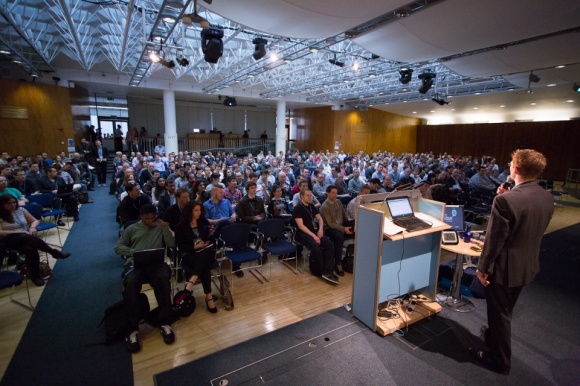


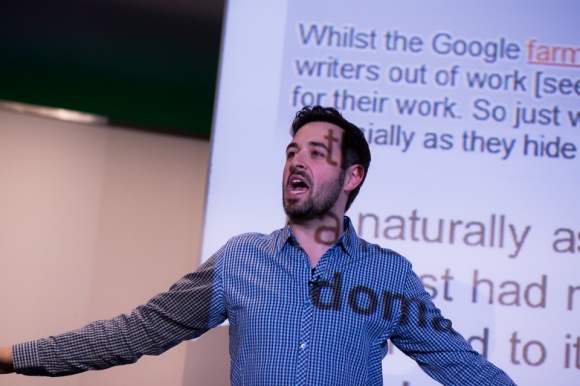
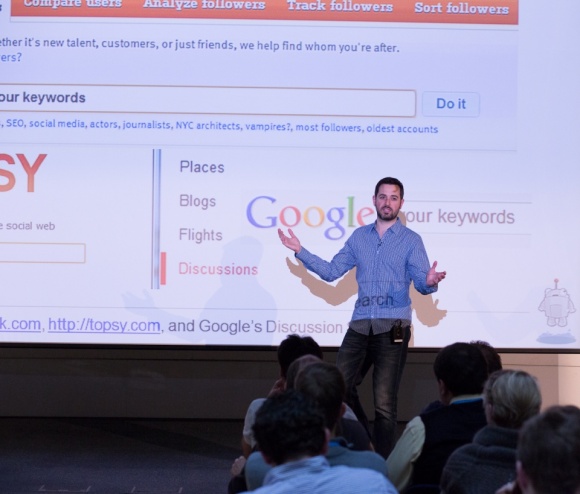
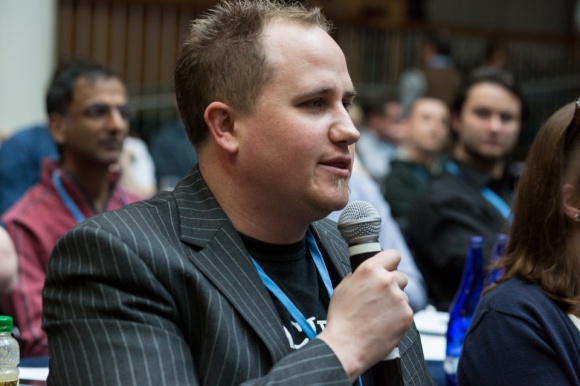
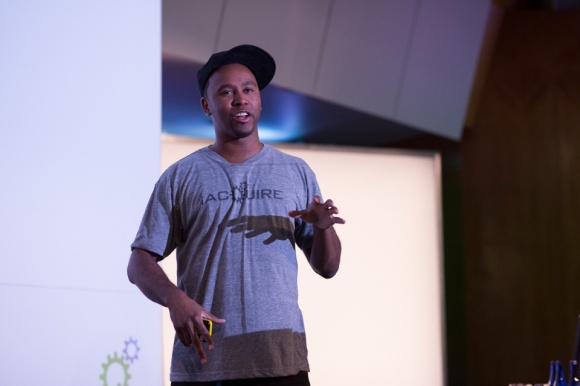
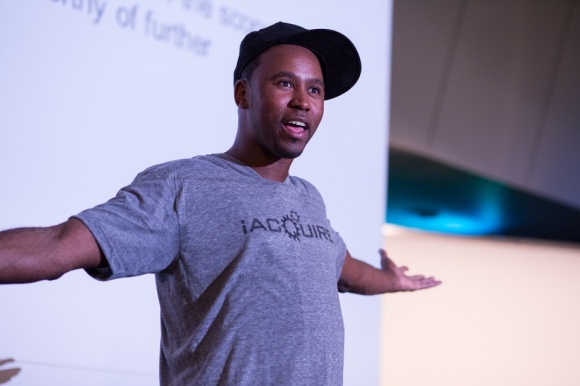
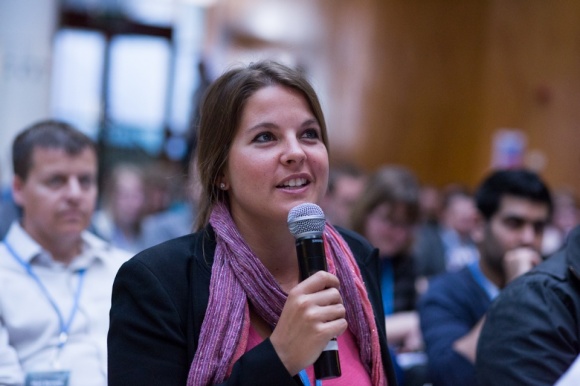
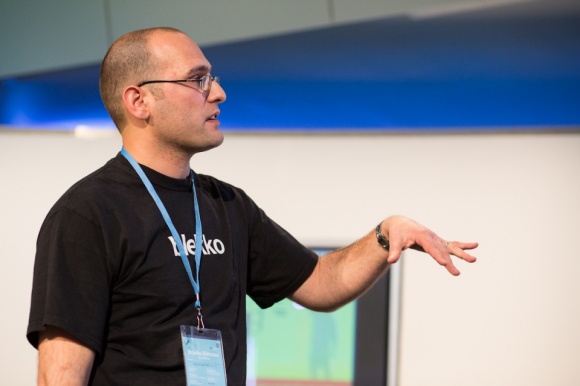
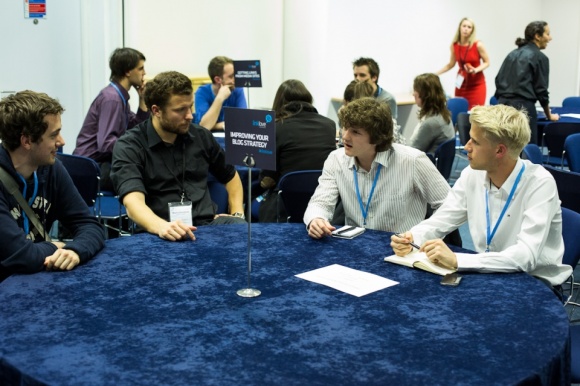
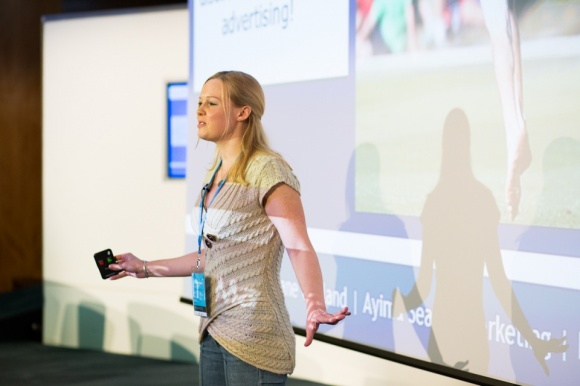
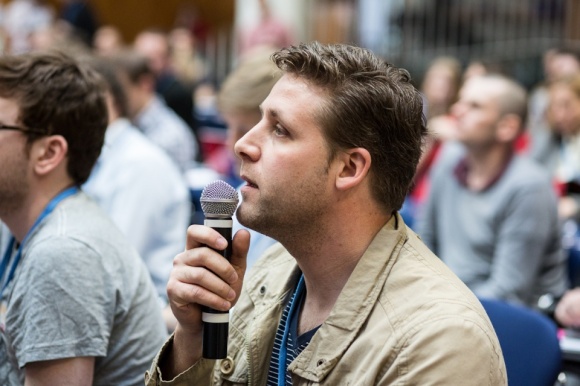
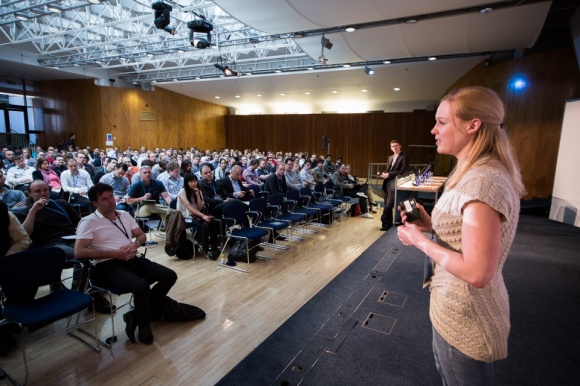
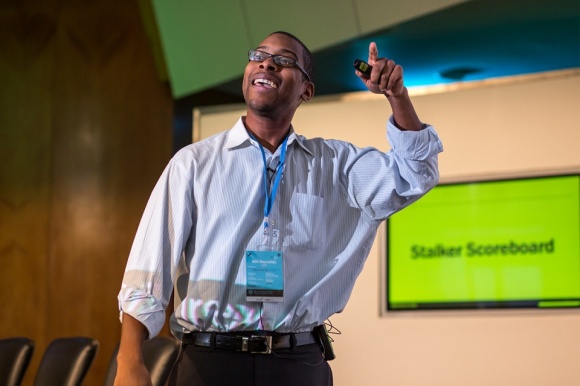

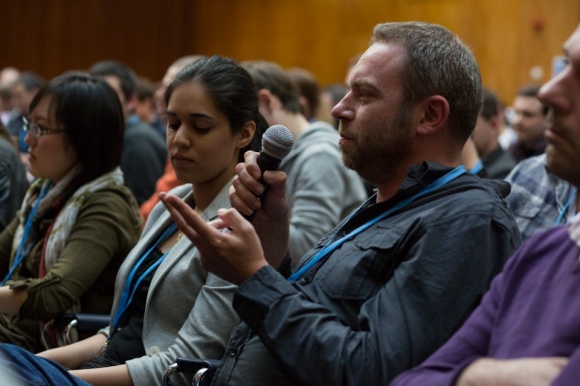
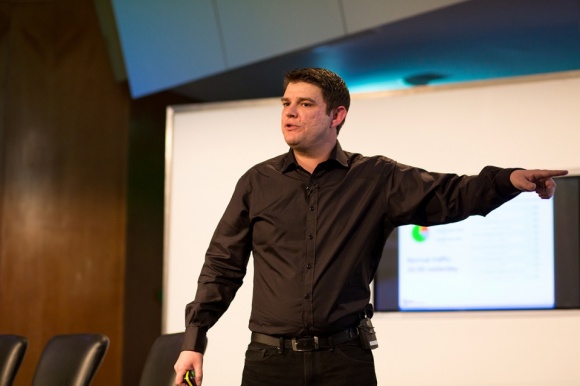
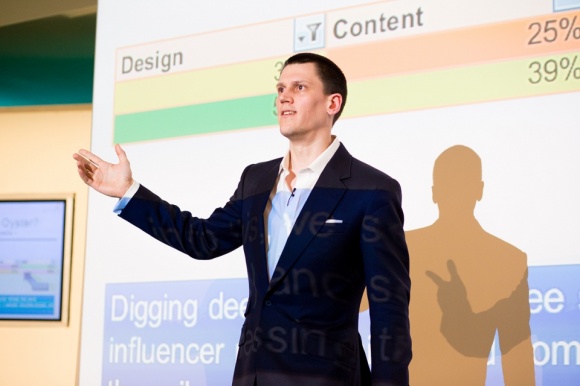

Leave a Reply